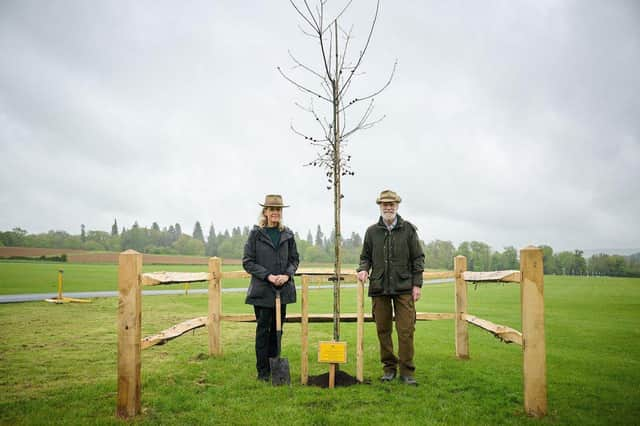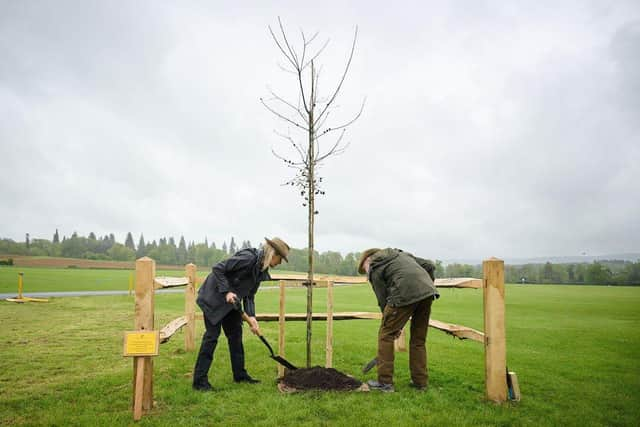Lord and Lady Cowdray plant a red oak to on their estate to mark the coronation of King Charles III


A British grown Quercus Rubra, otherwise known as a Northern Red Oak, was chosen as it makes a striking addition to the already beautiful landscape, and over the years will grow to be a majestic looking tree. Planted with home-grown Cowdray compost, the tree was planted just inside the main gate to Lawns in a place where many visitors can enjoy it.
“Lady Cowdray and I were delighted to mark Prince Charles’ accession to the throne with the planting of this beautiful tree. King Charles has always been passionate about protecting the environment including trees and woodlands, so this seems a fitting way to mark his coronation,” Lord Cowdray said.
Advertisement
Hide AdAdvertisement
Hide Ad“The tree also adds to the richness of the Estate’s history. The Estate has a long-standing connection with the monarchy through trees including the avenue of Oak trees planted in the Deer Park last year to mark the Queen’s Jubilee.”


Near to the avenue of trees planted for the Jubilee sits the Queen Elizabeth Oak, which is one of the most important veteran trees in the country and has been designated by the Tree Council as one of Britain‘s 50 Great British Trees. Queen Elizabeth I is believed to have sheltered from a storm under its branches in August 1591 when she visited Cowdray.
Just above the Queen Elizabeth Oak is a huge veteran Sessile oak tree known as the Lady in Waiting, as well as the nearby Cowdray Colossus, which is believed to be the largest Sweet Chestnut tree in England.